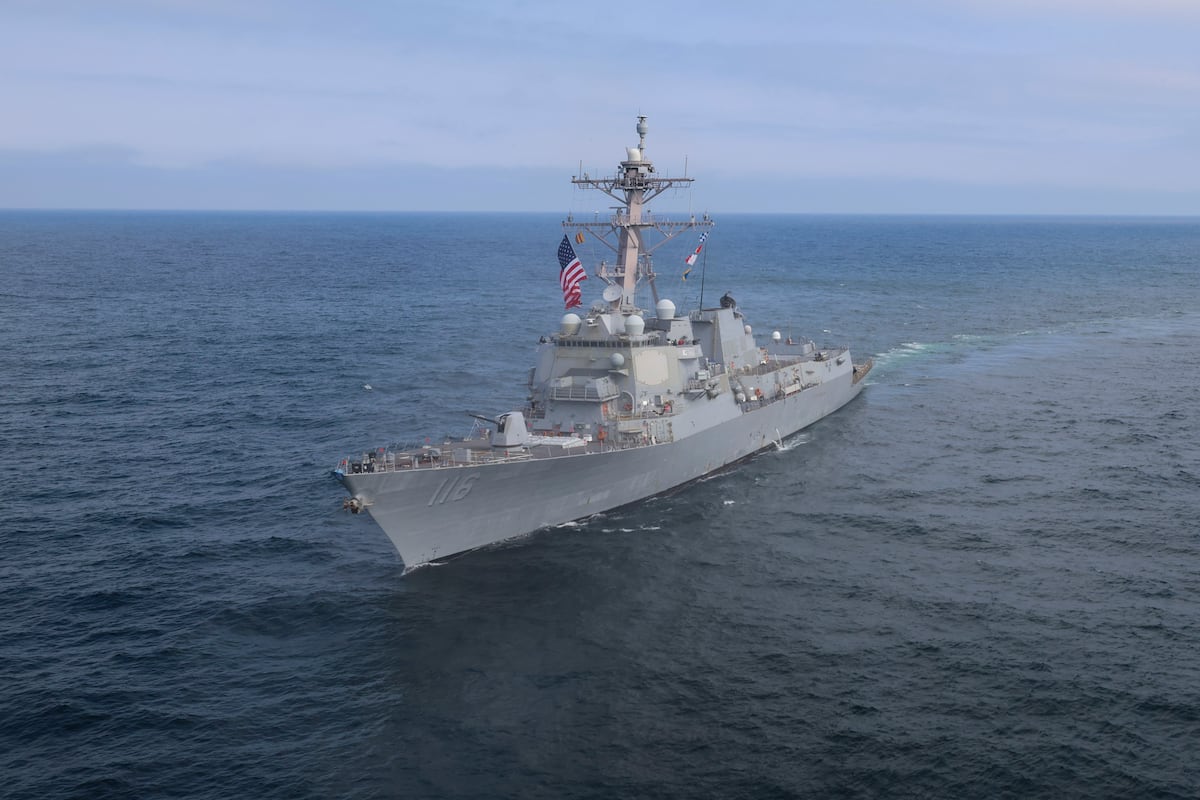Key Takeaways
- The U.S. Navy plans to develop the DDG(X), a next-generation destroyer, seeking $133.5 million in fiscal 2026 to support research and development.
- DDG(X) will have a larger design with a displacement of 14,500 tons, raising concerns about alignment with the Navy’s goal of a modern, smaller fleet.
- The destroyer aims to replace existing Aegis destroyers and will incorporate advanced features, including directed-energy weapons and a greater missile capacity.
Next-Generation Navy Destroyer in Development
The U.S. Navy is advancing plans for the DDG(X), its next-generation destroyer, as part of a broader effort to modernize its fleet. The Navy is requesting $133.5 million for research and development in its proposed fiscal 2026 budget, with ambitions to launch production in the early 2030s.
The DDG(X) is designed to have an increased displacement of 14,500 tons, a notable rise of 1,000 tons from earlier proposals within the Navy’s shipbuilding plans for fiscal 2024. This expansion raises questions regarding the Navy’s objective to streamline its fleet with smaller vessels. In an effort to modernize and reduce costs, the Pentagon has increasingly turned to autonomous vessels, having recently integrated small unmanned surface vessels into key exercises in the Baltic Sea.
This upcoming destroyer will replace current Aegis destroyers, such as the Ticonderoga-class cruisers and Arleigh Burke-class destroyers, both known for the Aegis Combat System. Developed in the 1970s, the Aegis Combat System was the first fully integrated combat system designed to counter advanced aerial and surface threats. The Ticonderoga was commissioned in 1983, and the Arleigh Burke class followed in 1991, acting as a smaller and upgraded alternative. There are currently 22 Ticonderoga-class cruisers that entered service between 1983 and 1994, and the Navy plans to retire all of these by the end of fiscal 2027.
The DDG(X) will retain key elements of the Aegis combat system while enhancing capabilities with a cruising range increase and a vertical launch system consisting of 96 cells, allowing for some to be converted to specialized missile launch cells. The ship’s power system will also be capable of supporting directed-energy weapons, which utilize electromagnetic energy such as lasers and microwaves for damage.
Furthermore, the Navy aims for the DDG(X) to operate with reduced underwater noise, minimizing vulnerabilities through decreased infrared, acoustic, and underwater electromagnetic signatures. This strategic shift marks a significant evolution in naval warfare and defense technology, positioning the U.S. Navy to better address future threats in a rapidly changing global landscape.
The content above is a summary. For more details, see the source article.















